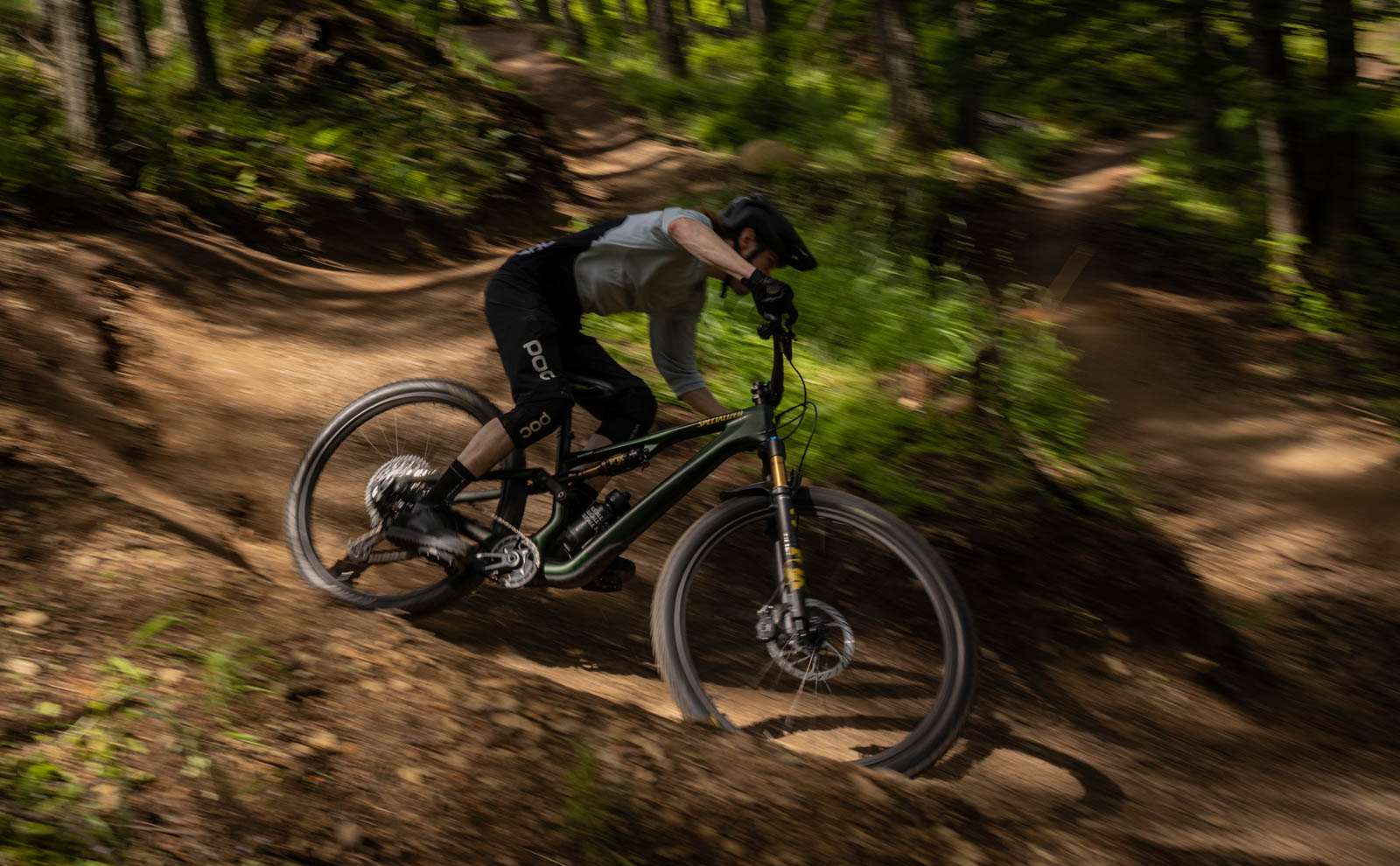The Specialized Stumpjumper must be one of the most iconic trail bikes in MTB history. The first hardtail model was released 43 years ago, and Specialized has just announced the 15th version of the full suspension Stumpjumper. I’ve been riding the Stumpjumper 15 Pro for a month, and it rides like a bike that’s benefitted from years and years of refinement.
With 145mm of rear travel, 29” wheels (as tested), and adjustable geometry the Stumpjumper is a do-anything, go-anywhere trail bike. The new Genie rear shock is the icing on the cake, enabling this mid-travel bike to handle big impacts and rough terrain extremely well. I had the chance to ride the Stumpy in two very different trail networks, and it excelled in both for different reasons.
Specialized Stumpjumper 15 – Key Specs:

Be sure to check out my launch post for complete details on the new Stumpjumper lineup, but here’s a quick rundown of the key specs and features.
The Stumpjumper 15’s front and rear triangles are made from Specialized’s Fact11m carbon fiber. The bike offers 145mm rear travel driven by an FSR linkage. Most models run 150mm forks (except the smallest S1 frames, which have 140mm forks, and the Ohlins Coil model which has a 160mm fork).
Specialized stocks MX wheels on the smaller frame sizes (S1 and S2), and 29” wheels on all larger frames. The larger sizes can run a 27.5” rear wheel, if you swap out the link for an aftermarket version that maintains the bike’s geometry and suspension kinematics.
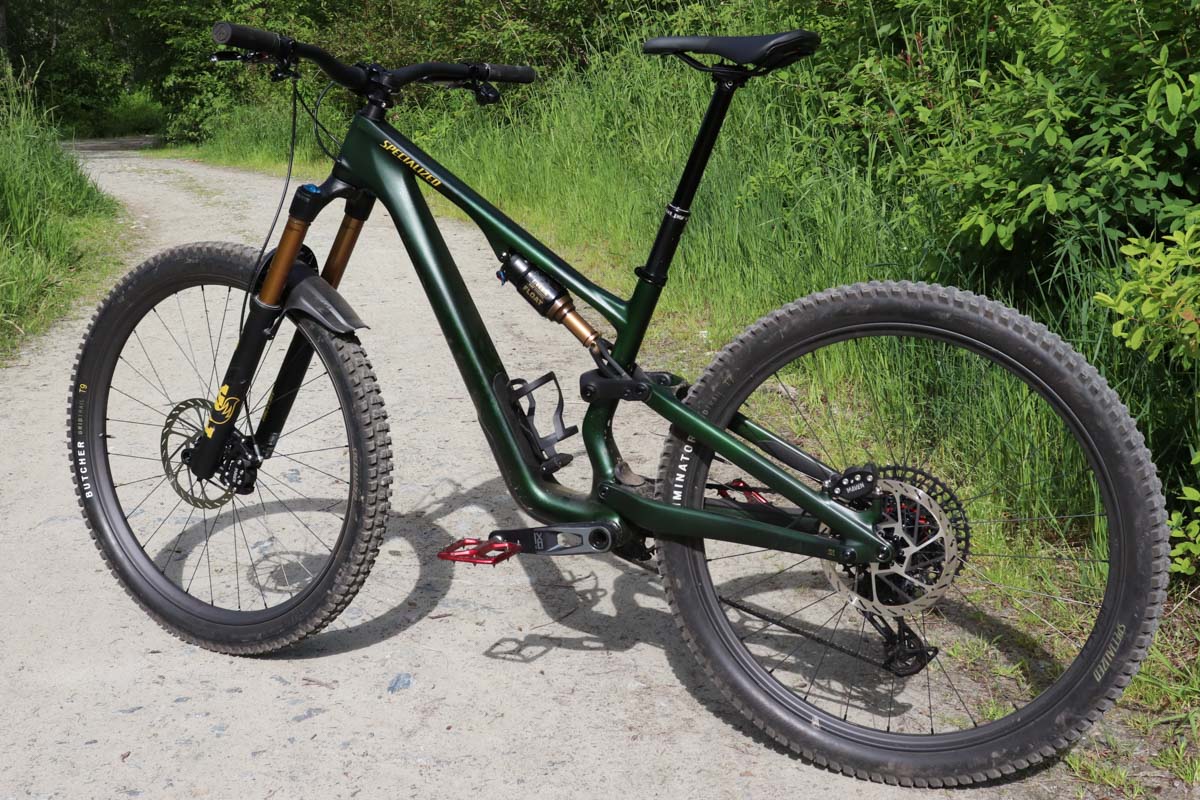
Some key updates from the last Stumpy are the new angle-adjustable headset, the lack of a Sidearm support on the frame, and wireless drivetrain-specific cable routing. That’s right – there is no routing for a derailleur cable on this frame! Specialized decided to drop the sidearm support in favor of a reinforced link and a cleaner design.
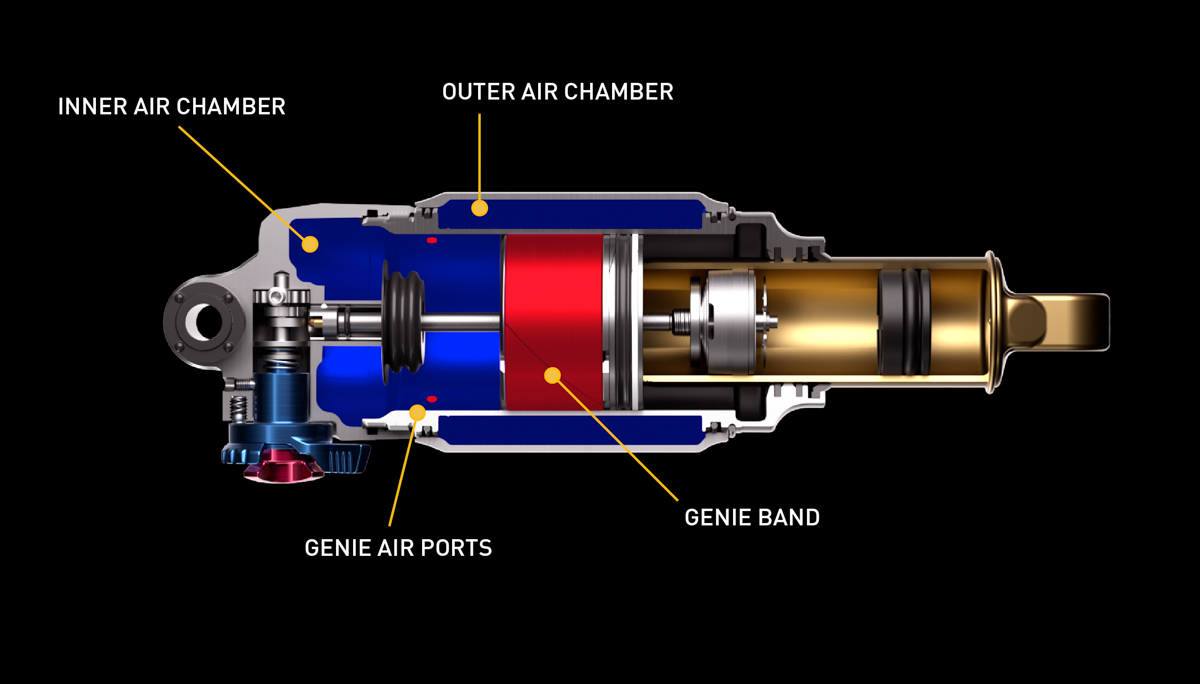
Finally, the new Genie rear shock is a key component of the Stumpy 15’s versatility. Specialized developed this shock alongside the new Stumpjumper, and it offers a unique double air chamber system that reduces its air volume at 70% stroke. This creates a sharp ramp-up effect at end-stroke, greatly reducing harsh bottom-outs on rough terrain or big landings. The first 70% of the stroke is independently tuneable so you can choose between the softest, most sensitive suspension possible or a more supportive, poppy ride.

I was very happy to see the size S3 Stumpjumper 15 Pro weighing in it just 31.72lbs (with pedals)!
Fit and Geometry:

The Stumpjumper is offered in six frame sizes, following Specialized’s S sizing scheme. At 5”10”, I find myself in the middle of the S3 and S4 sizes, but I opted to test an S3. At 450mm reach, this frame is shorter than a lot of current ‘medium’ bikes, but at 475mm the S4 would be one of the longest bikes I’ve ridden. Given the Stumpy is a trail bike and not a long-travel enduro, I enjoyed the agility and playfulness of the S3 frame.
Specialized kept the S3 frame’s chainstays at a middle-of-the-road 435mm, which allows for whippy cornering and a playful ride. However, the adjustable steering angle and low BB height options can increase the bike’s stability and capability on steep descents.
I have pretty long legs so standover height is usually not a concern for me. The Stumpy isn’t particularly low at 745mm but I had ample clearance over it. Specialized didn’t go super low with stack height either, and I kept four spacers under the stem so I enjoyed a pretty comfortable riding position on the S3 frame. Given this bike is ideal for long days rambling around the trails, I chose not to get too aggressive with the front end.
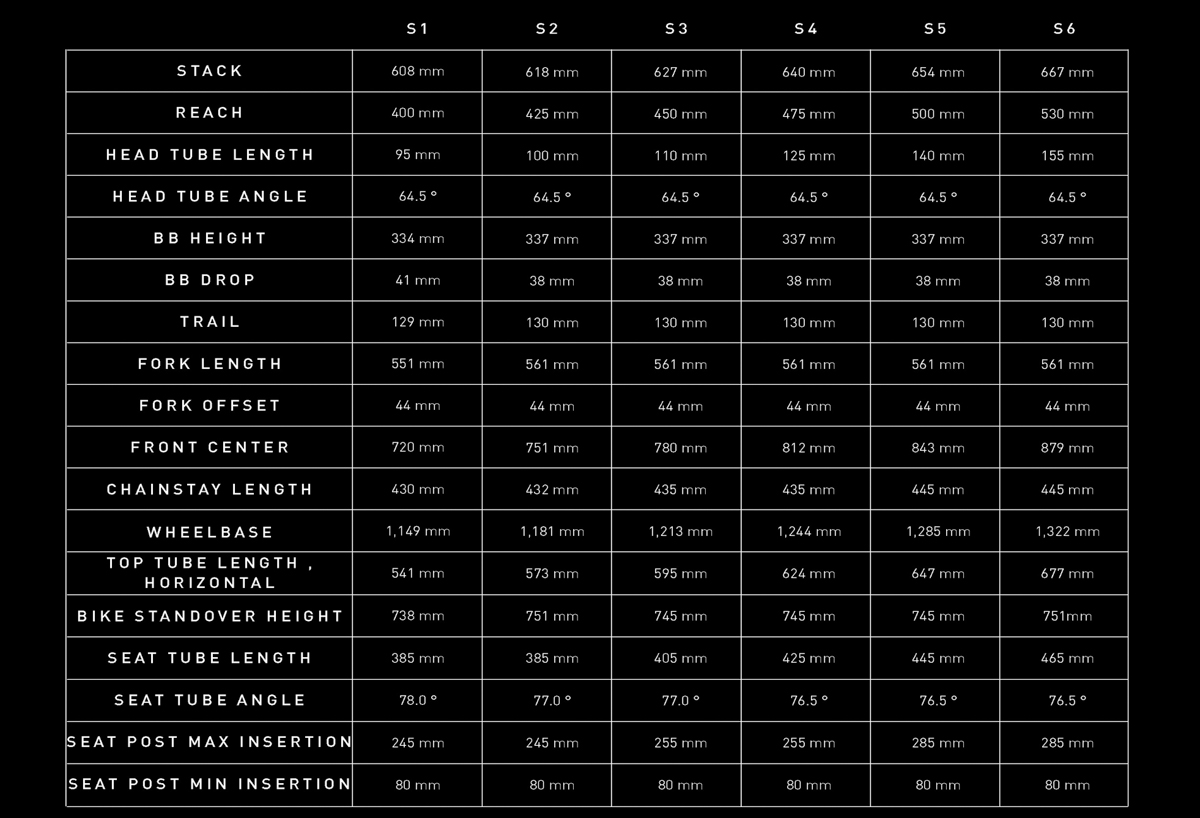
*Please note the geo chart shows only the neutral/high BB figures. The swappable headset cups allow for a +/- 1° steering angle adjustment, and dropping the BB with the chainstay flip-chip lowers it by 7mm and slacks out the bike another 0.5°.
I rode the Stumpy in two positions during my test; neutral/high BB, and slack/low BB. I started off in neutral/high position at Specialized’s launch event in Cowichan Bay, B.C., and later swapped to the slackest and lowest position while riding my much rougher local trails in Pemberton, B.C.
Cowichan Bay Ride Notes: Geometry
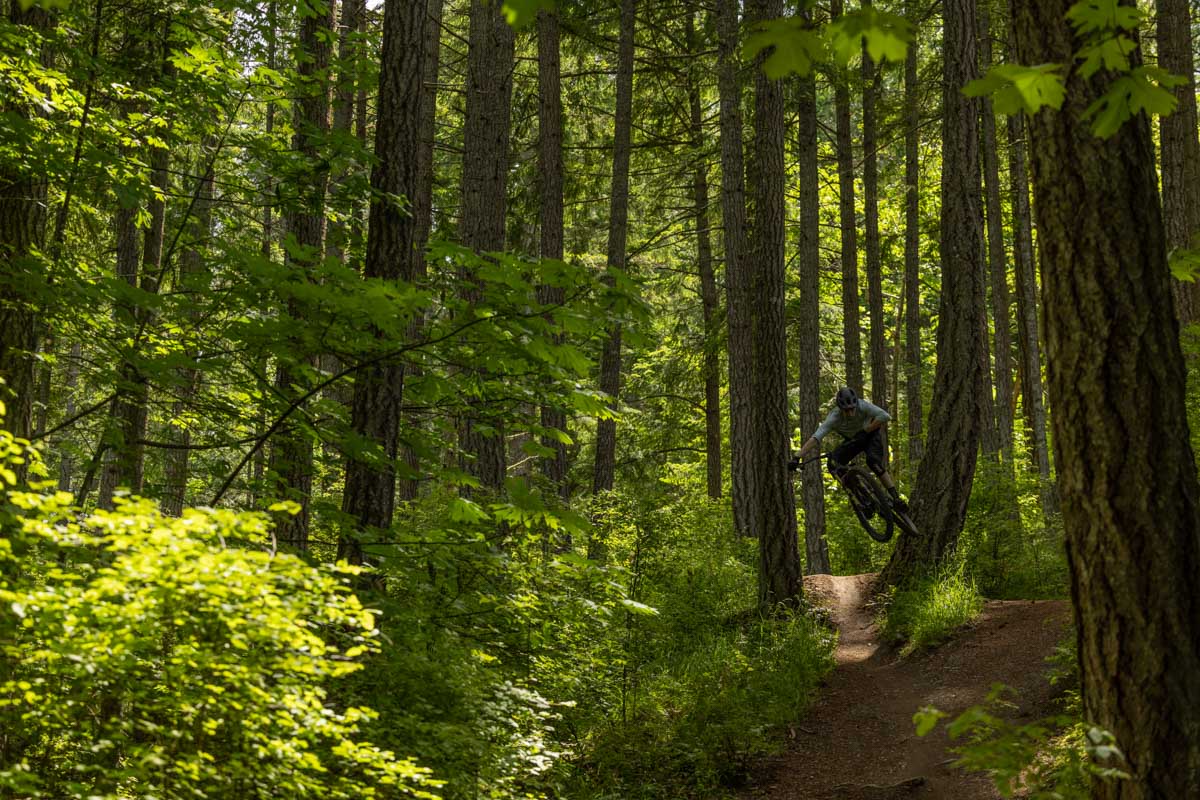
The trails we rode in Cowichan Bay were fairly buff, fast running flow runs with deep, swoopy berms and some small jumps. There are a few bumpy rooty sections, but nothing too technical or loose. The climbs were a mix of fire road and singletrack trails, with some steeper bursts but mostly low grades.
Right away I could tell the Stumpjumper is a great option for a do-everything bike. Its 145/150mm travel is ideal, and the bike rides like the halfway point between an enduro and a short travel trail bike. Even in the neutral/high position, it offers a surprisingly stable ride, yet the Stumpy also remains agile and playful. The neutral steering angle was great for these trails, it’s slack enough for confident descending but still navigates uphill switchbacks nicely. There are berms galore in Cowichan Bay and the Stumpy’s 435mm rear end railed through them. It’s also pretty easy to wheelie this bike over whoops, and the short-ish frame made it a pleasure to toss around on the jumps.
Suspension:

With the rear shock in Firm mode, the Stumpy is an aggressive climber that pedals very efficiently. On any terrain the Stumpy will use about 50% travel under pedaling forces and low-speed wheel impacts with the shock firmed up. The Stumpjumper is also a very reasonable bike to climb in open mode, as it pedals well by itself with little noticeable bob. While it does allow the bike to dip and wallow under your body weight more, Open mode could optimize grip on technical climbs with little loss of efficiency.
Using the shock’s Firm mode is much more effective at keeping the bike riding high than adding four spacers (more on spacers below) and climbing in open mode. If you’re thinking about using the volume spacers to ensure solid climbing, I’d recommend using the shock switch instead. That way you can keep the suspension set up for descents and simply flip the switch for optimal climbing prowess.
The Stumpjumper’s linkage itself has a supportive mid-stroke. The bike pumps through rollers really well and doesn’t wallow into its travel in swoopy berms with big G-outs. What’s great is that you can fine-tune the level of support with the Genie shock’s volume spacers.
Genie Rear Shock Tuning:
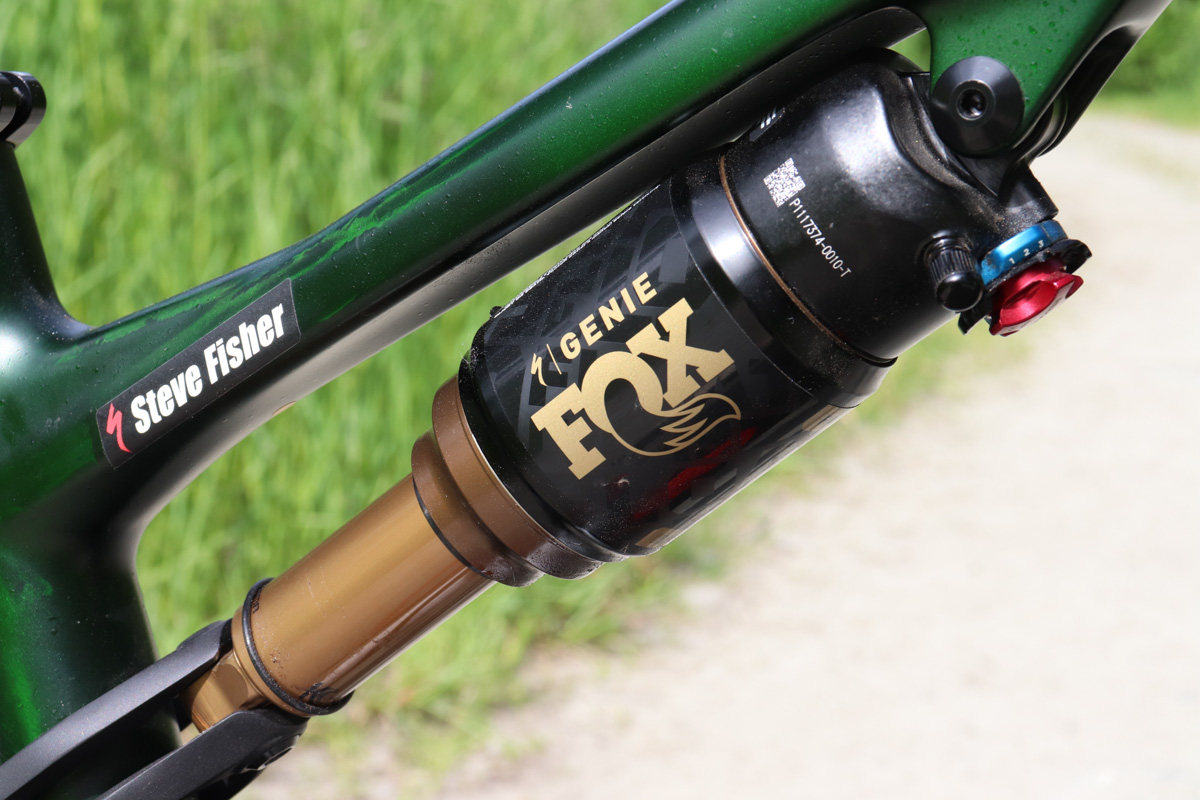
I spent the first day in Cowichan Bay riding with one spacer in the Genie rear shock. Right away I could tell this tune was working for me, as I got close to full travel on every lap. Bump absorption was impressively smooth for the Stumpy’s 145mm travel, yet I never felt any harsh bottom-outs on our first ride day.
At this point I should mention there is no noticeable feel when the shock’s Genie Band slides up and closes its outer sleeve ports for the last 30% of travel… the transition goes completely unnoticed. The folks at Specialized explained that because of how air compresses, the Genie shock won’t produce a harsh, abrupt feeling when the outer chamber gets cut off. It simply continues to compress consistently despite the immediate reduction of air volume inside.

On day two I tried all four spacers in the shock. The bike did feel more supportive overall and stiffer through corners. There was no huge loss in small/medium bump absorption but there was a noticeable difference; riding over roots felt a bit more abrupt and apparent in this setting.
I was quite surprised this setup wasn’t way too stiff for me, as a lightweight guy at just 130lbs (following some recent weight loss… long story!). The spacers are much more of a fine-tuning tool than I expected, but they definitely offer a noticeable range of adjustment. Remember that the Genie shock uses eyelet spacers to tune its bottom-out resistance, so adding/removing outer sleeve spacers changes the Stumpy’s initial/mid-stroke behaviour without altering its end-stroke progressivity.
I did my final laps with no spacers in the Genie shock, which offered a noticeably softer ride than the four spacers, but not as extreme a difference between the two as expected. There was a definite improvement in small bump absorption, and an obviously softer feel when popping off roots/rocks. The bike dipped into its travel more between rollers and in corners, and I did hit bottom out a few times in this configuration.
Pemberton Rides:
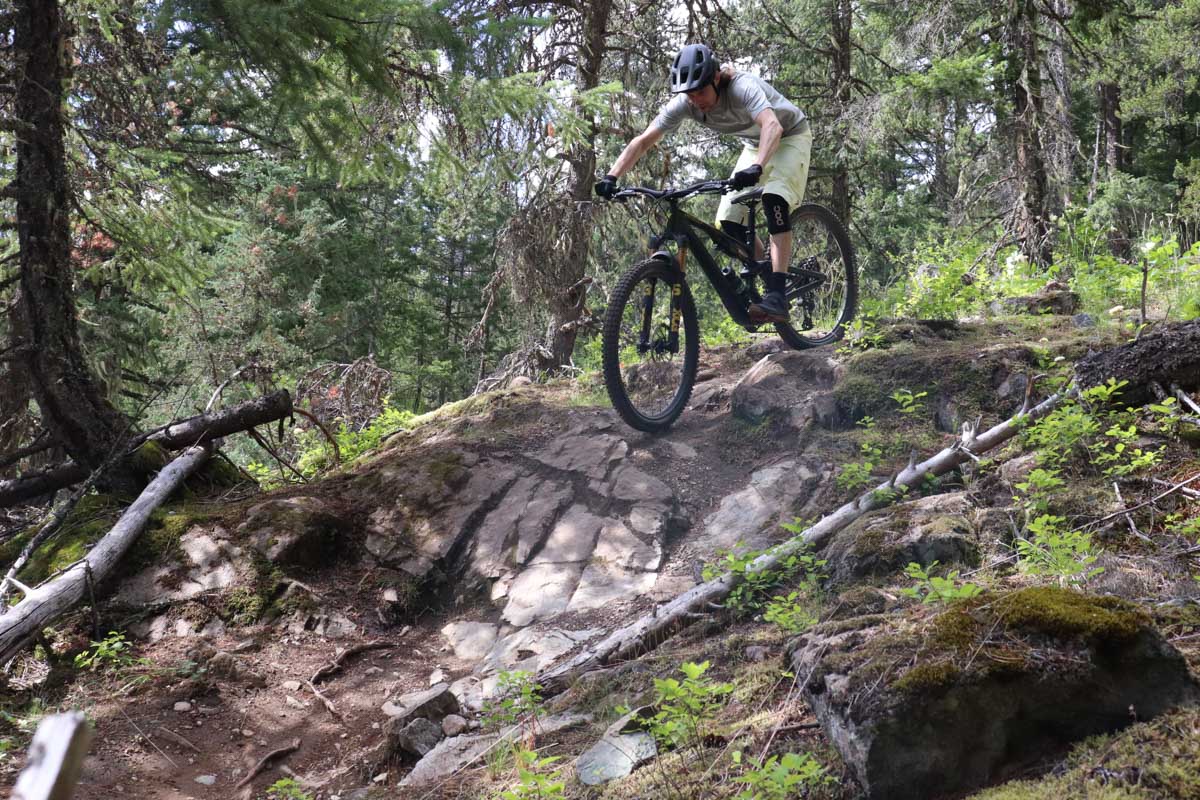
I brought the Stumpjumper home from Cowichan Bay to my local trails in Pemberton, B.C., which are a lot rougher and steeper. This was a great opportunity to see how well-rounded the Stumpy could be, and it proved itself! Given the rough terrain, I did bump up the shock to 135psi, and started with no spacers in the Genie’s outer air chamber.
As for geometry, I noticed while climbing the shorter S3 frame allows for good body movement over the bike. When you need to heave yourself right up over the head tube, it’s easy to do so. When you’re struggling and yanking the bike around tight corners or up technical obstacles during a climb, the less-than-enduro length of this bike is appreciable. The rear end is just long enough to hold traction well on steeper uphills, and with its reasonable weight the Stumpjumper 15 Pro is a joy of a bike to climb.
For the last few test rides, I switched the Stumpjumper to its slackest steering angle and low BB setting. I immediately went to the steepest descent in my area, and the Stumpy handled it like a champ. 63° is the slackest steering angle I’ve ridden on any bike, and it gives the Stumpy enduro-grade capability on really steep terrain. On the climbs, the front wheel starts to feel a bit floppy with the bike fully slacked out, but I found this minor loss of agility easy to tolerate.
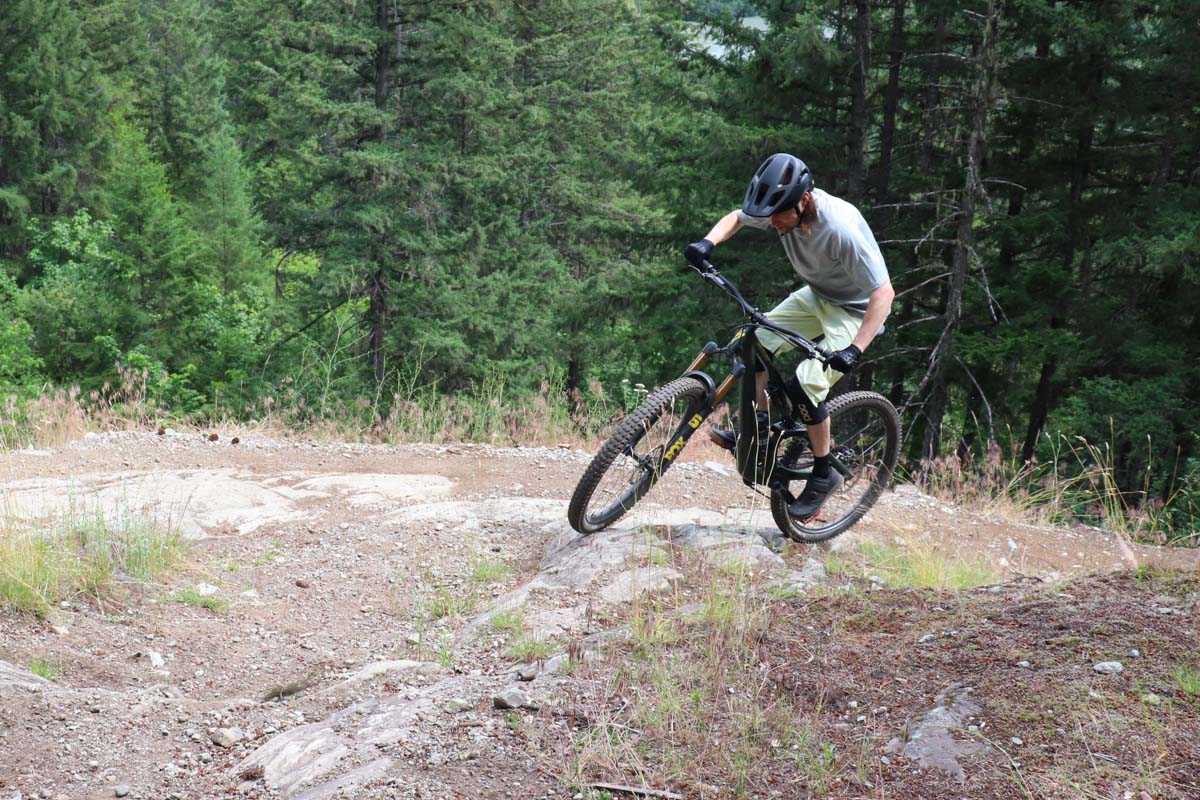
Even on Pemberton’s bumpier climbs, the shock’s Firm mode keeps you to 50% travel. The bike still hugs bumps nicely and provides ample traction, but does not absorb bumps generously… the rear end lifts over obstacles and resists diving into holes between roots/rocks.
Climbing in Open mode produces a bit more bobbing/wallowing. Pedalling is still very well supported but I noticed more action from the rear end when rolling through dips in the trail while seated. The rear wheel moves noticeably more in Open mode, so it offers a more comfortable climb. The trade-off is some loss of momentum on bumpy sections, as the rear wheel dips into holes more easily. I hit about 80% travel after a long technical climb with a few small downhill sections.
I was pleased to find I didn’t experience as many pedal strikes as expected with the BB in Low setting. I did knock a few rocks and roots, but didn’t have to be as careful as I expected. Even in its High position, the Stumpy is a low-slung bike, but dropping to Low increases that stable ride feel just a bit more.

As for descending rougher trails, the Stumpy handled everything really well. My first descent was down a fast, rocky run and I came away impressed with how smoothly the bike ate it up. At this point I double-checked the bottom out point on the shock and confirmed that the Genie was ramping up nicely and keeping me just above full travel on a lot of laps. After hitting 99% travel on Cowichan Bay’s smoother trails, I was a bit worried the bike might be too soft for Pemberton but with a slight bump in air pressure it proved perfectly fine.
The Stumpjumper took care of chattery small and medium-sized bumps in very smooth fashion, leaving me pretty impressed with its overall bump-handling ability.
Specialized had a certain stiffness in mind when they designed the new Stumpy frame. While they did maintain some flex and compliance, at my weight I found the Stumpjumper felt pretty solid and held lines through the rough stuff easily.
Genie Shock Tuning Continued:
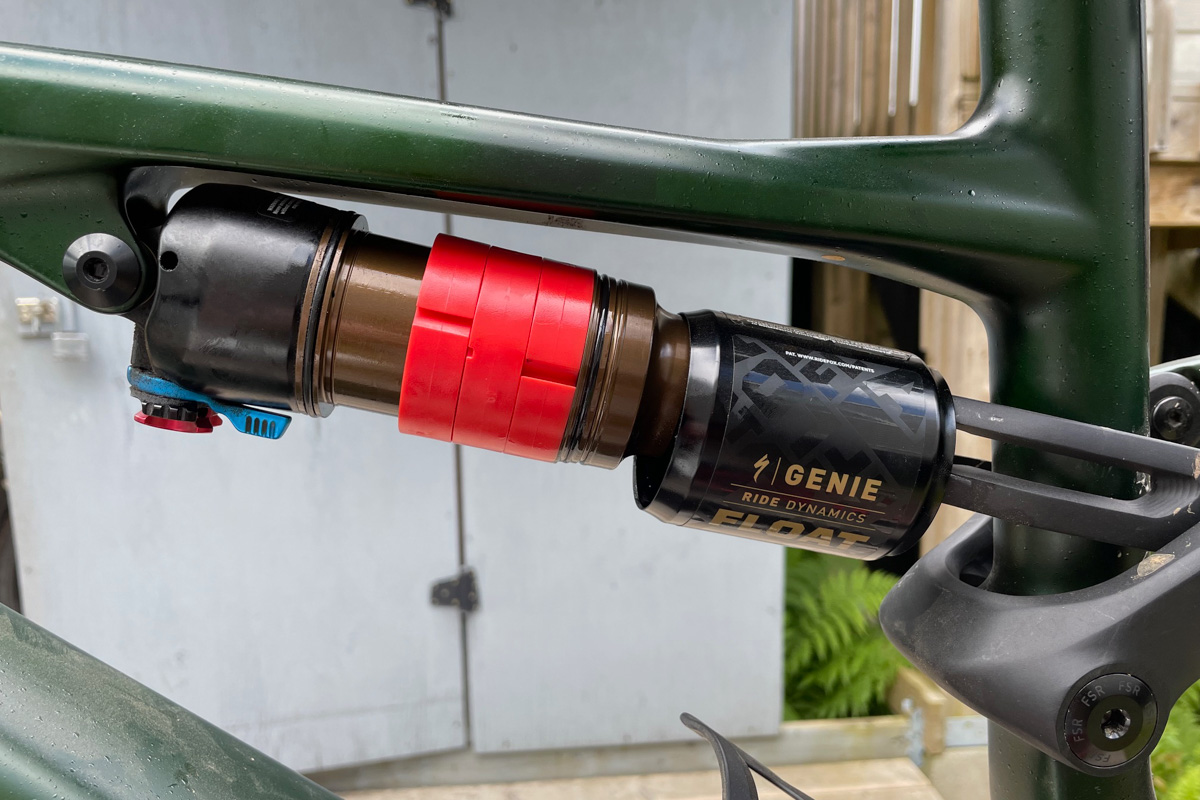
I took a day to experiment with the Genie’s outer chamber volume spacers again on my rough local trails. On the bumpier climbs I did feel a bit of a difference in suspension behavior, even with the shock in Firm mode. With four spacers installed the bike resists diving quite strongly, especially when seated and rolling through dips. The rear end feels a bit stiffer when absorbing bumps, but travel use remained consistent at 50%.
When climbing in Open mode with four spacers, the spacers don’t produce a big boost in pedaling efficiency or reduce travel usage. I still hit nearly 80% travel climbing in Open mode, so as mentioned earlier the shock’s switch has much more effect on climbing efficiency than the outer air chamber spacers.
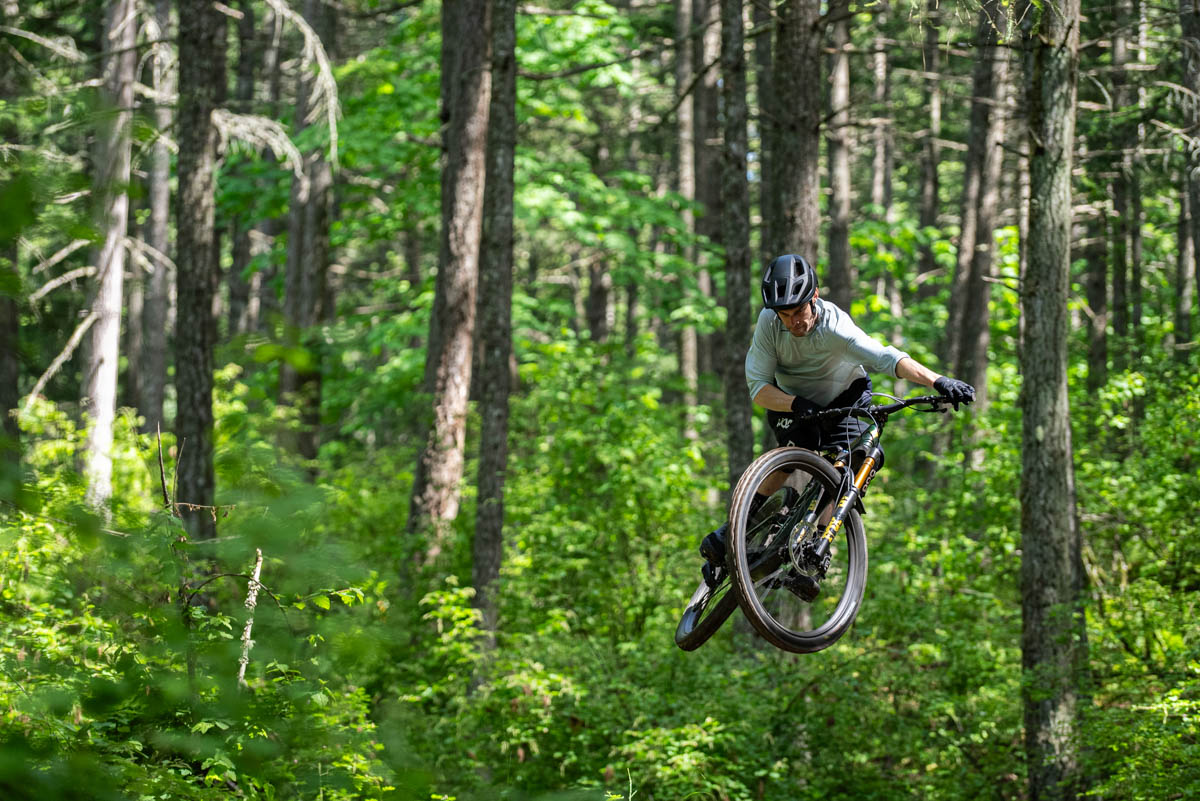
Descending with four spacers offered noticeably less smooth bump absorption and less initial sensitivity, but great pop off jumps. With the spacers in the bike carries speed well over rooty sections, so if speed is your priority (or for race day?) you might want to add spacers… but this comes at the expense of ride comfort and small/medium bump gobbling capability.
Running one volume spacer seems to be the sweet spot for me on rough terrain like Pemberton. In Cowichan Bay I might run two spacers but not when bump absorption is the priority! With one spacer the Stumpjumper still eagerly eats up small and medium bumps, provides an impressively smooth ride for its 145mms of travel, and offers the lively ride of a short travel trail bike.
Frame Storage and Components:
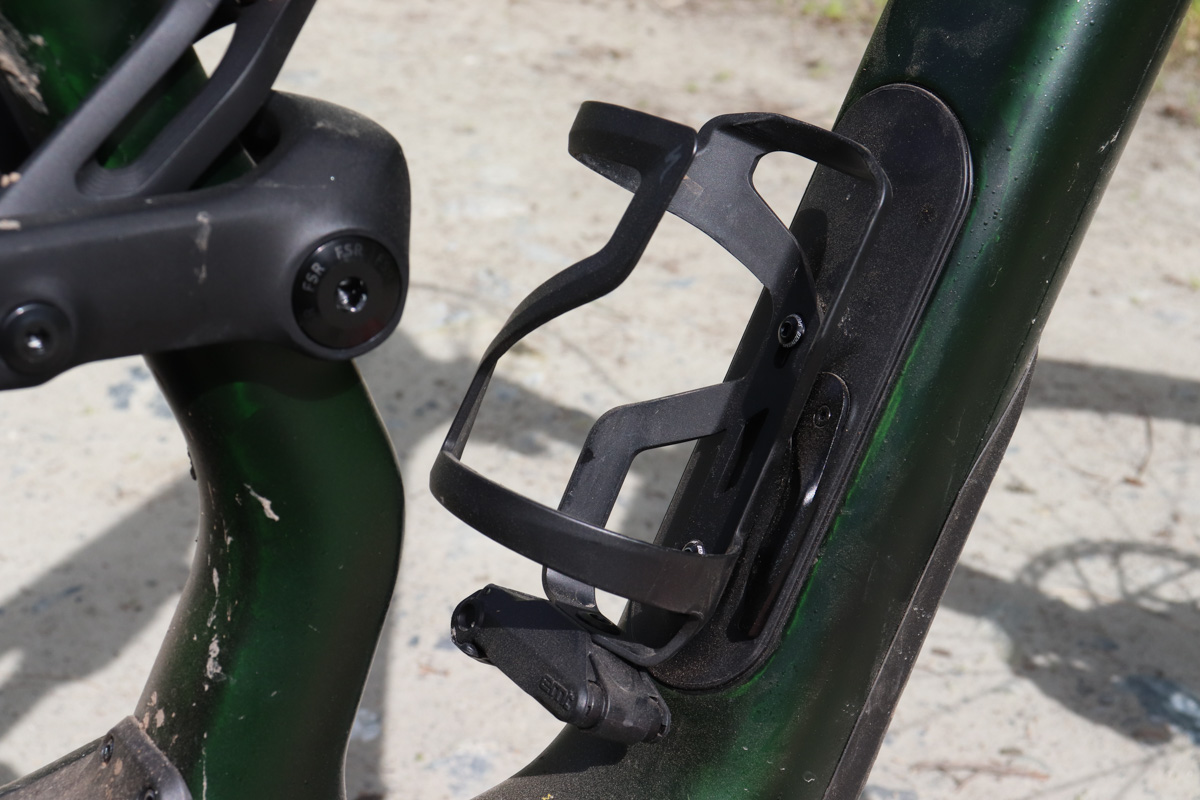
The SWAT 4.0 frame storage offers enough space to carry the usual ride essentials. I was able to carry a large c02 canister, inflator head, plug tool, spare plugs, a spare battery for the AXS shift pod, and a multi tool with room to spare. Specialized supplies a bag to hold tools in the frame, which works but I’ve found tool rolls do a better job of preventing things from rattling around in the bike. I simply wrap my c02 canister in a rag, and it keeps things quiet. I was quite happy to find the bottle cage could hold a large water bottle in the S3 frame with ample space to access it easily.
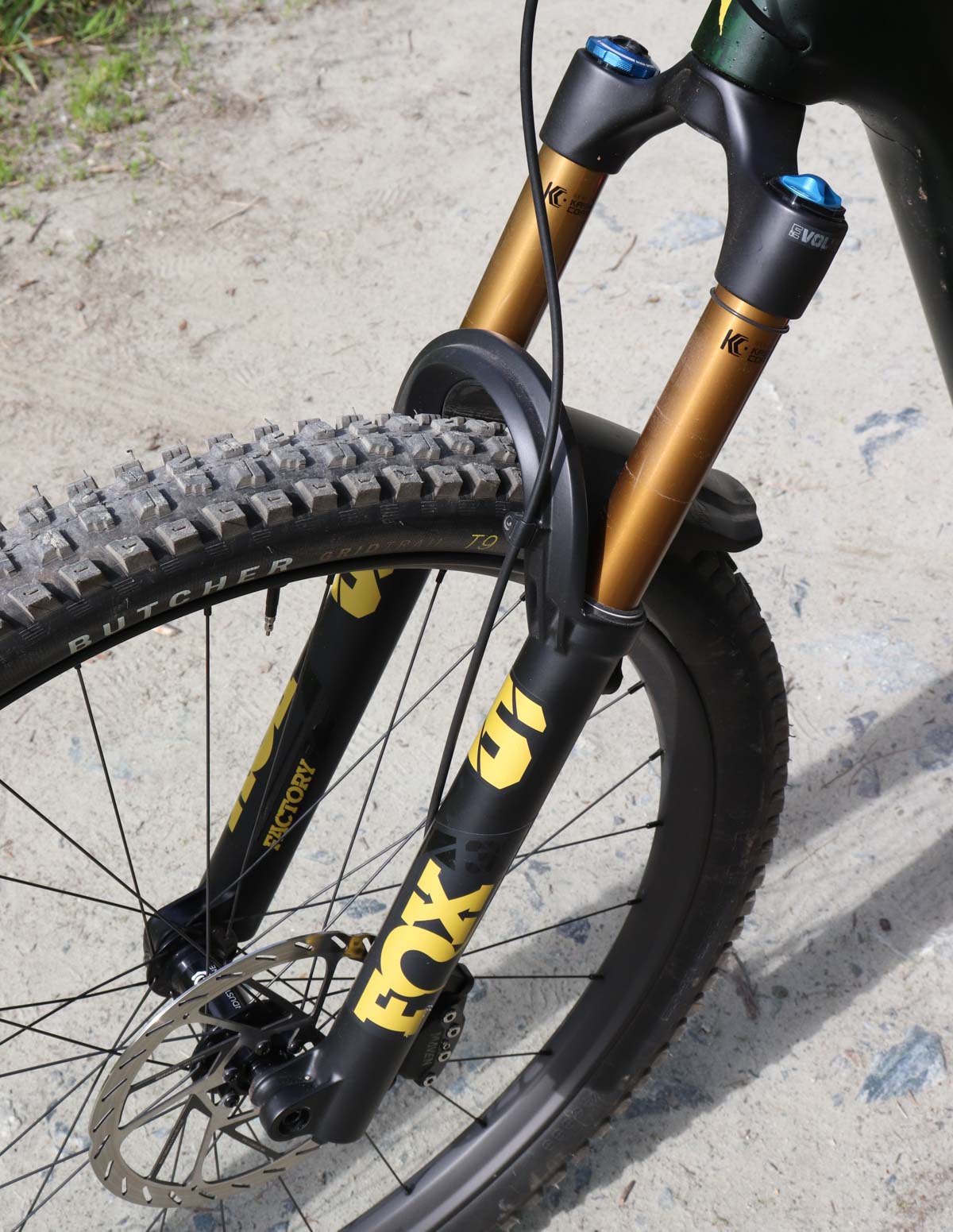
Check out the Specialized website for full build specs, but here are a few quick notes on components: Fox’s 36 Factory fork offered great performance, and was dialed in nicely with just a basic setup. The included fender is a nice touch.
The SRAM Maven Silver brakes on 200mm rotors offer tons of power and aren’t too bitey. I have found the bite point on Maven brakes tends to move around a bit (on the Ultimates and Silvers so far…) but with their good modulation it’s not significant enough to threaten my control over the bike.

SRAM’s X0 AXS shifting has been flawless, which is good since you’re stuck with it on the Stumpy!
I’m happy with the 800mm Roval bar and wouldn’t cut it down. Getting a carbon bar is also a nice touch on a high-end bike like the Stumpjumper 15 Pro.
Specialized’s Mirror Tech saddle is pretty comfortable, but nothing magical… following the launch event my butt was a bit sore after two long days of riding! Throughout my typical riding, the seat is quite cozy though. Having a 185mm dropper post is excellent for a ‘medium’ (S3) frame.
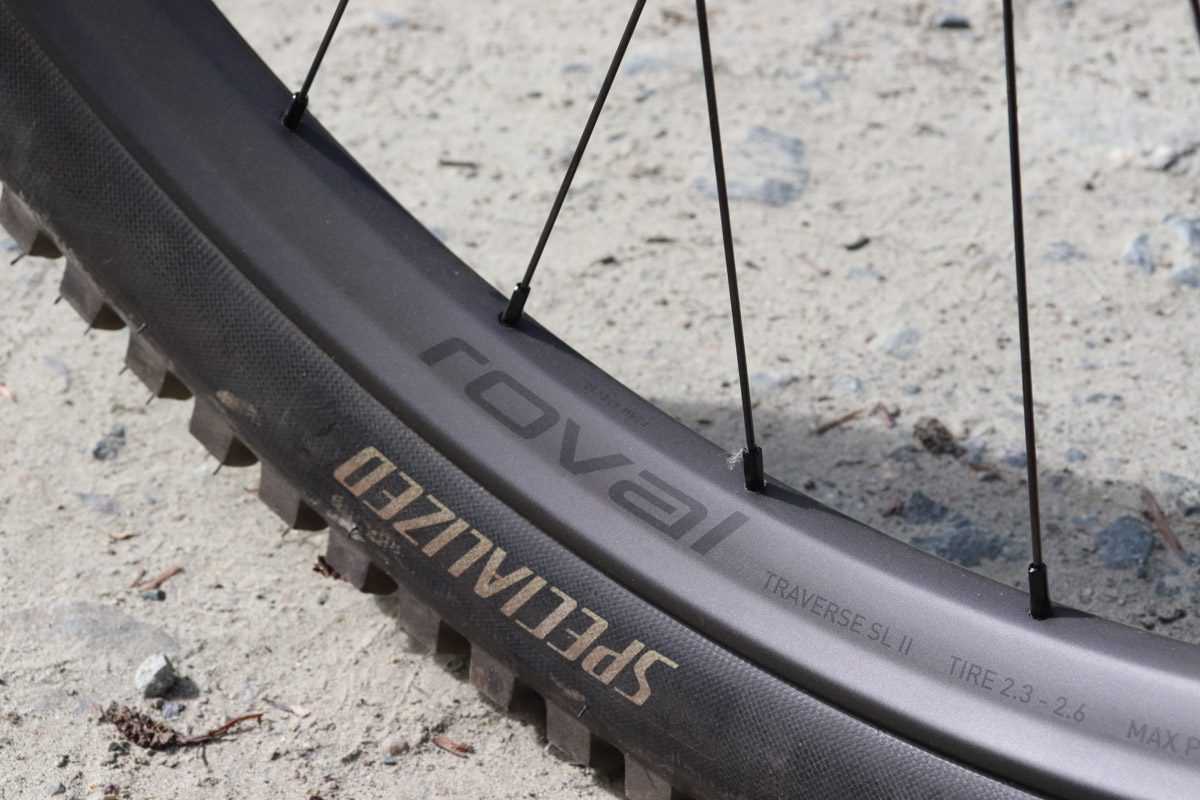
After a month of riding the Roval Traverse SL II carbon wheels are showing no damage at all and running perfectly true. The Specialized Butcher front and Eliminator rear tires have proven to offer good grip on all kinds of surfaces. I noticed they did great on a very rocky trail, allowing me to creep down slabs with plenty of control.

Finally, the paint job on the Stumpjumper 15 Pro is pretty cool looking. Some of the carbon weave shows through the translucent green color, and the finish is textured to resemble raindrops on the frame.
The Stumpjumper 15 Pro retails for $9,000. This model comes in the Satin Green Tint/Gunmetal/Satin Metallic Sulphur color only.
